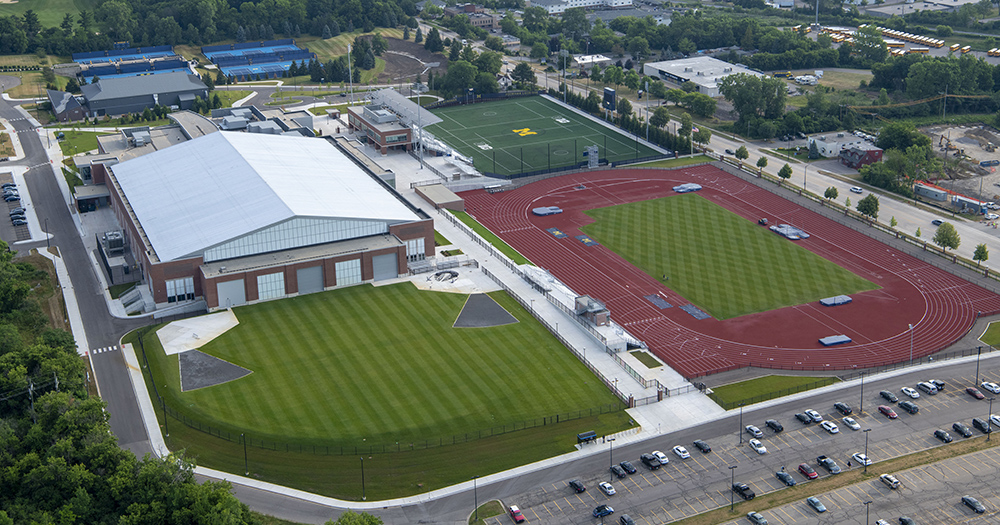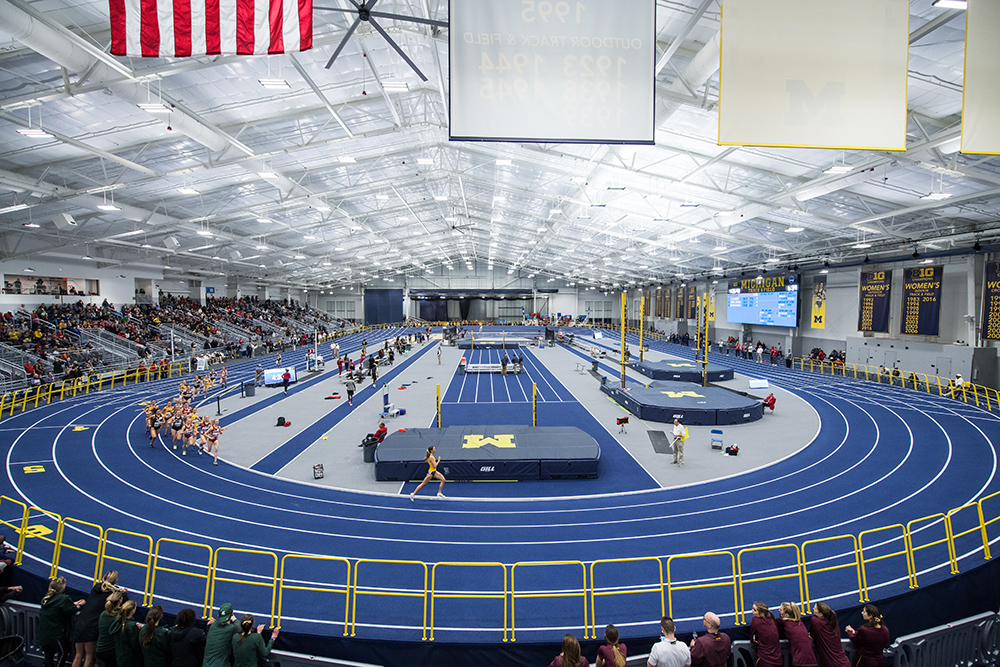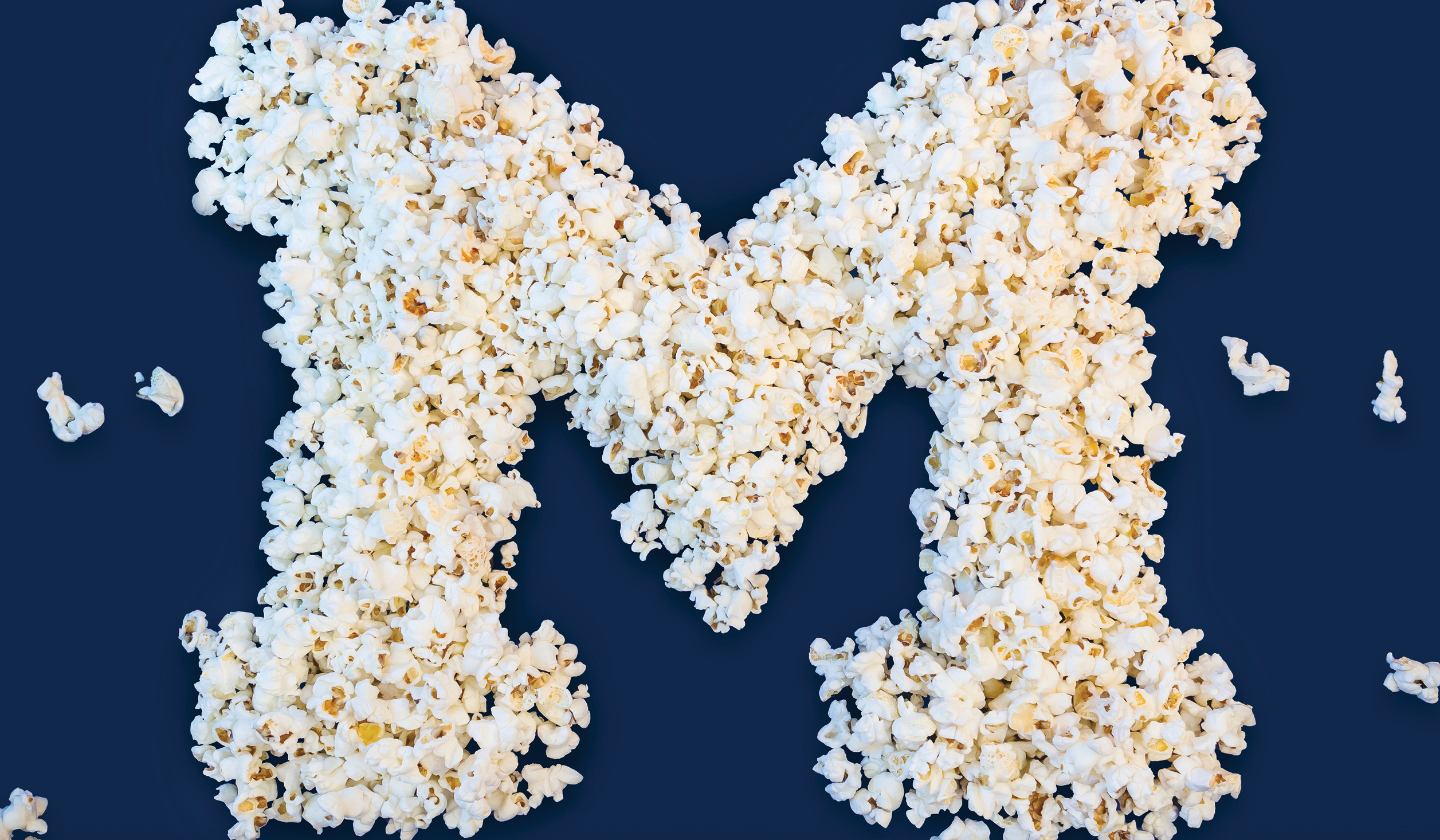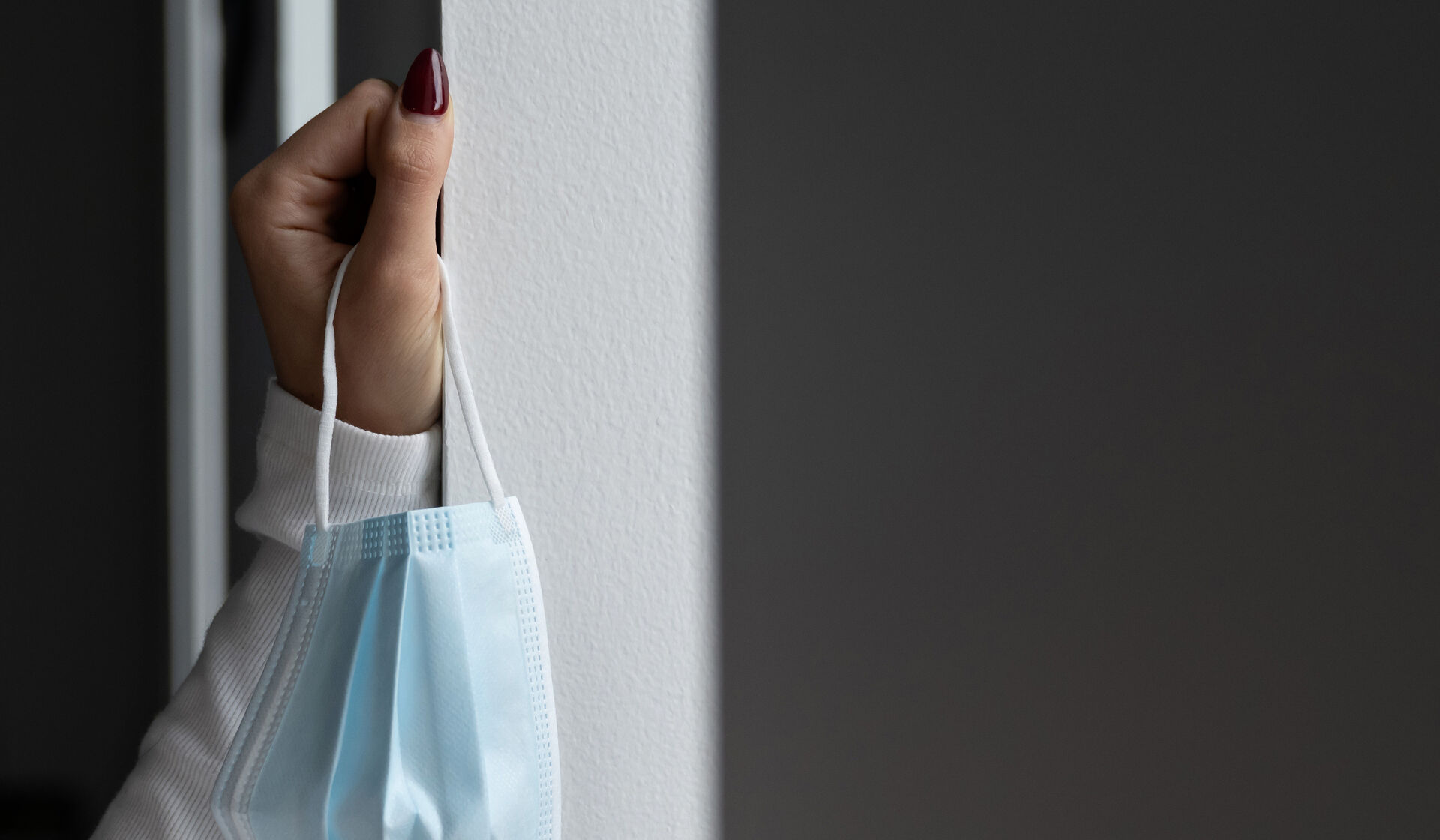When it comes to track and field, U-M is used to making history. In 1935, Jesse Owens set three world records at Ferry Field while competing for Ohio State in a championship tournament. The following year, he headed to Berlin and secured four gold medals. Beyond Owens, seven other Olympic gold medalists and multiple Olympic contenders trained on that famous field. Now, U-M hopes its new outdoor track and field complex—which replaced Ferry Field—will lead to even more records for both student and professional athletes.
Though it has been four years in the making, the $168 million Stephen M. Ross Athletic Campus- South Complex is now ready to test drive its final facility. On May 3, the outdoor U-M track and field stadium will host its first event, the Len Paddock Open, a major college tournament with pole vaulting, hurdles, and races; thanks to brand new bleachers, seating will accommodate 500 spectators.

Located on South State Street, not far from Michigan Stadium, the complex boasts 280,000 square feet of state-of-the-art competitive and training facilities for a variety of sports: lacrosse, soccer, cross country, women’s rowing, and, of course, track and field. Construction on the complex began in 2015 and was completed last year. However, U-M had to wait for warm weather to put the new outdoor track into action.
“There are fifth-year seniors who’ve never competed in an outdoor meet at U-M,” says Jerry Clayton, one of U-M’s two head track coaches, citing Michigan’s inclement weather and the limitations of the old outdoor track. “It will be a really exciting weekend for them.”

U-M athletes have already broken in the new indoor track, which is now hosting its second season of athletic competition. The highlight of the indoor facility is the 200-meter hydraulic track, the same as those used at major competitions worldwide. Using what’s called a Rise-N-Run system, the track’s sides can be raised and lowered at each end. The feature allows coaches and athletes to add slope into the track, reducing the effort needed to make tight turns and ideally leading to better competition times.
“It’s the new baby, and all the athletes want to see it,” says runner Shannon Osika, ’16, a U-M track and field star who now competes professionally.
Osika uses the indoor track facilities almost every day in her training and says the difference is noticeable. The six-time, All-American recently cut a second off her 800-meter running time, achieving a personal best of 2:02:89. “My workouts have been more intense because we’re not trying to get in a bunch of speed on a 200-meter flat track,” Osika says, adding that the banked track is “something I always wanted.”
Joe Ellis, a U-M senior who competes in throwing events, raves about another feature of the indoor track: a set of compartments with doors that open outside, allowing throwers to practice in any kind of weather. “It’s an unbelievable asset,” Ellis says of the track. “I was absolutely stunned the first day we were able to walk around.”

Also creating a buzz among both student and professional athletes is the vast two-story training center, which includes the University’s first indoor rowing tank. The facilities accommodate nearly two-thirds of U-M’s student-athletes, with additional training facilities for sports not played there, such as women’s gymnastics, men’s wrestling, and tennis.
Ellis and Osika are particularly impressed with the different types of workout equipment, weights, and treatment methods, including two ice tubs, a hot tub, a rehab pool, underwater exercise bikes, and plenty of athletic gear, such as NormaTec recovery pants for muscle soreness and circulatory issues.
“There’s always a pair you can use. You don’t have to wait,” says Osika. Adds Ellis, “Not only is the track getting people stronger and better, but it’s also getting them healthier.”
Clayton, who was involved in the track center’s design, says one of the goals was to create a state-of-the-art facility that could be used for a national championship meet as well as a Big 10 championship, which requires space for more athletes because the national meets limit the entries. Clayton drew from his experience as a coach at Auburn University, where he took part in the creation of its track facilities.
No tuition or tax dollars were used to fund the complex. Funding was provided entirely by athletic donor resources and gifts, including a $100 million gift from Stephen M. Ross.
Osika says the word is getting around among her elite peers about the complex. “There’s no facility like it in the country,” says Clayton.
Micheline Maynard, who grew up in Ann Arbor, was a Knight-Wallace Fellow in 1999-2000. She wishes the South Athletic Campus had been around when she was playing high school tennis.





